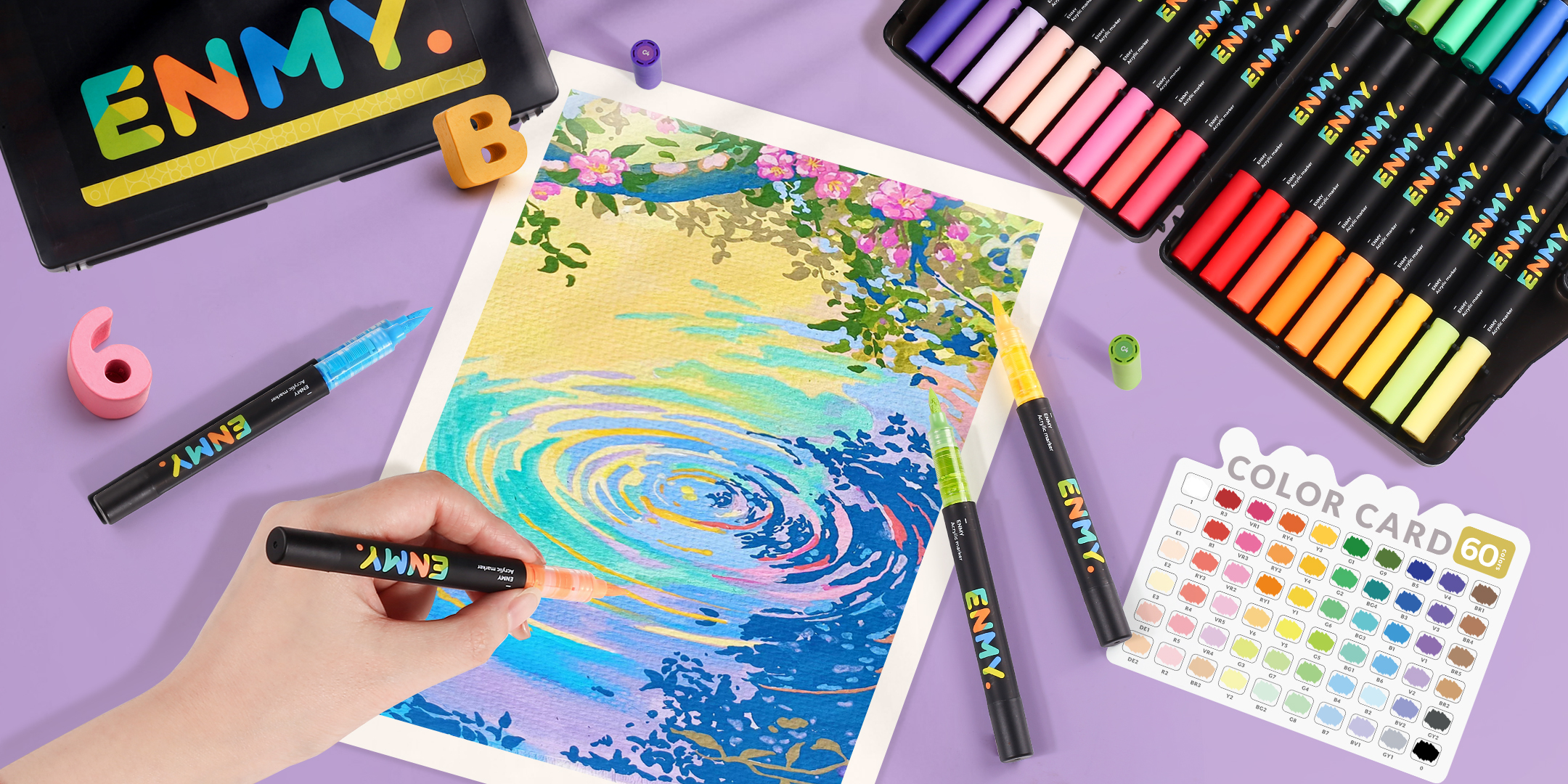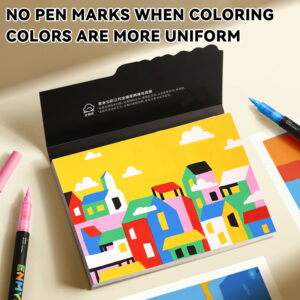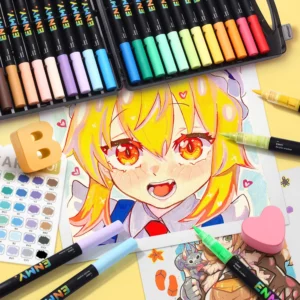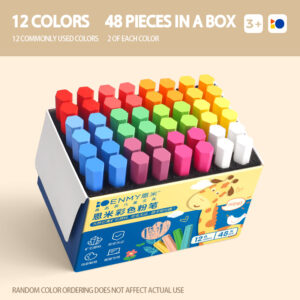Colors are the most intuitive gift the world has bestowed upon humanity. They linger in the morning glow, hide in blooming petals, dance in urban neon, and flow deep within every human eye and soul. From the refraction of light in physics to emotional resonance in psychology, from totem paintings of primitive tribes to visual language in modern design, colors have always shaped our perception of the world and woven the rich layers of life.
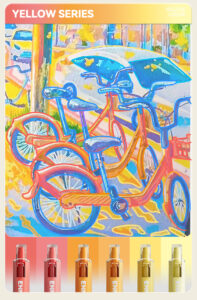
The Essence of Colors: A Wonderful Encounter Between Light and Eyes
The birth of color begins with the dialogue between light and vision. From a physical perspective, color is the result of visible light acting on the human eye after being reflected or absorbed by objects. Sunlight is a composite of seven monochromatic lights: red, orange, yellow, green, blue, indigo, and violet. When light hits an object’s surface, different substances selectively absorb some wavelengths and reflect others—leaves reflect green light, thus appearing vibrant green; roses absorb other lights and reflect red, thus blooming with passionate crimson.
The human visual system is a “precision instrument” for decoding colors. Cone cells on the retina are sensitive to three primary colors of light—red, green, and blue—and can distinguish millions of colors through different combinations. This is why electronic screens can reproduce the colorful world using the “RGB” primary color system. However, color is not an absolutely objective existence: the same gray appears green against a red background and red against a green background. This “visual illusion” reveals the subjectivity of color perception—it is a product of the physical properties of light and brain interpretation.
The Spectrum of Colors: From Primary Colors to Infinite Transformations
The world of colors has a rigorous order, like notes on a musical score, creating visual melodies through combinations. The most basic “primary colors” are the cornerstones of the color system: the primary colors of pigments are red, yellow, and blue, which can be mixed in different proportions to create most colors in the world; the primary colors of light are red, green, and blue, which can produce white light when superimposed, forming the core logic of color display in digital media.
From primary colors, colors have 衍生出 a rich family. Adjacent primary colors mix to form secondary colors (orange, green, purple), and primary colors mixed with secondary colors create tertiary colors. Like magic on a palette, colors evolve from simplicity to complexity. To standardize color expression, people have created a three-dimensional coordinate system of “hue, lightness, and saturation”: hue is the “name” of a color (e.g., red, yellow), lightness is its brightness (e.g., pink vs. crimson), and saturation is its purity (e.g., true red vs. grayish red). This system transforms color from a subjective “beauty” into a quantifiable, precisely transmissible visual language, widely used in design, printing, textiles, and other fields.
The Language of Colors: A Universal Emotional Code
Colors are a silent language that evokes strong emotional resonance, rooted in both universal physiological responses and unique cultural imprints.
In terms of universal emotional associations: red is often linked to passion and vitality, and may also signal danger (e.g., warning lights); blue conveys calmness and trust, common in medical and technological fields; yellow is bright and lively, evoking joy but may also cause anxiety due to its 刺眼 nature; green symbolizes nature and vitality, often used in environmental and health themes; purple combines mystery and nobility, appearing in religious symbols and creative industries. These associations are not accidental—red has the longest wavelength and is the first to be visually captured, making it ideal for attracting attention; blue causes pupils to contract, bringing a sense of calm, an instinctive association with the sky and ocean.
Cultural differences endow colors with more complex meanings. In China, red symbolizes celebration, permeating weddings, Spring Festival, and other important occasions; in some parts of South Africa, red may be associated with mourning. White represents purity in the West (e.g., wedding dresses) but is traditionally used in funerals in the East. Understanding these cultural codes allows color expression to avoid misunderstandings and truly “convey emotions and meanings.”
The Application of Colors: Shaping Every Dimension of Life
Colors permeate all areas of human activity, influencing behavior and decisions with invisible power.
In artistic creation, colors are direct carriers of emotions. Van Gogh used intense yellow in Sunflowers to convey the passion of life; Monet captured the blue-purple changes of light in Water Lilies, expressing tender gaze at nature; Picasso’s “Blue Period” paintings used cool tones to depict loneliness and melancholy. Through color contrast, harmony, and gradation, artists make works transcend figurative descriptions and reach the audience’s hearts.
In business and design, colors are strategic tools. Brands build recognition through exclusive colors: Coca-Cola’s red conveys vitality, Tiffany’s teal symbolizes elegance, and Starbucks’ green is associated with nature. In retail environments, warm colors (orange, yellow) stimulate appetite, common in restaurants; cool colors (blue, green) can extend stay time, suitable for bookstores and cafes. Color choices for product packaging precisely target audiences: children’s products often use bright red, yellow, and pink to highlight liveliness; high-end skincare products often use black and gold to create a sense of luxury.
In daily life, colors express lifestyles. In home decoration, light colors make spaces appear larger and brighter, while dark colors bring a sense of calm and privacy; color combinations in clothing can show personality and adapt to occasions—workplace attire often uses low-saturation blue and gray to convey professionalism; casual color-blocking outfits release freedom and vitality. Even in diet, colors affect taste expectations: orange juice is perceived as sweeter, green vegetable salads imply health. This “color affecting taste” phenomenon makes color an important part of the dining experience.

The Philosophy of Colors: Finding Balance in Diversity
Although colors are beautiful for their “diversity,” true harmony often comes from balance. Like the color changes of the four seasons—fresh green in spring, lush green in summer, golden yellow in autumn, plain white in winter—each has its own beauty and connects with each other, forming a cyclical rhythm. Human use of colors also pursues “rich yet unified”: in interior design, “main color + accent color” avoids clutter; in brand visual systems, limiting to 2-3 core colors ensures recognition consistency.
The charm of colors also lies in their fluidity and possibilities. There are no absolutely “good-looking” or “ugly” colors, only inappropriate combinations. A “dirty color” that is disliked may become the key to harmonizing the whole when placed in the right environment; a bright color considered “tacky” can glow with new ideas in creative combinations. This inclusiveness is just like human perception of the world—only by accepting differences can we see more complete beauty.
From the moment sunlight passes through a prism, colors are destined to be part of human civilization. They record the evolution of nature, carry cultural memories, and drive innovative inspiration. Whether it’s the sunset seen when looking up or a touch of color from a paintbrush in hand, it’s the world telling us: life is vivid precisely because of the encounter of all these colors.


